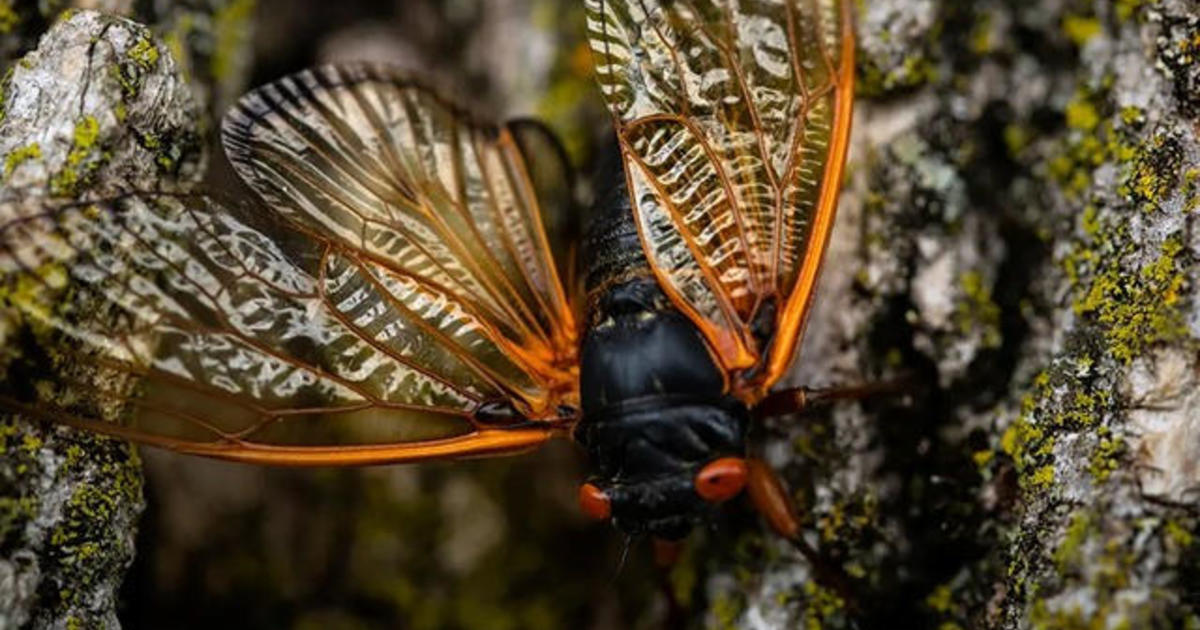Yumi Hogan, A Sumi Ink Artist, Takes Us Inside Her Studio
ANNAPOLIS, Md. (AP) -- The hiss of highway traffic seeps into Yumi Hogan's fourth-floor classroom through windows, muffling a fluttery recording of Asian music.
For an instant, the room feels empty, every desk abandoned.
About 20 students with swooshes of hair and skinny jeans cluster silently around Hogan's workbench. They watch her dab her brush, load it with ink, then scroll on paper.
"You don't have to use the water too much today," she says. This is a lesson in rock landscapes. "Use the dry brush."
They return to their desks, and Hogan wanders from one end of the room to the other. She puts her hand on a young man's shoulder and mimes the brushstroke in the air.
She's pulling an imaginary string; she's dragging an invisible conductor's baton. The motion is subtle but precise.
Inside this Maryland Institute College of Art building in Baltimore, Hogan teaches sumi ink brush painting. The ancient East Asian art form is one that requires control and an unfettered imagination -- one free to mix dreams and memories with real landscapes. She describes this as having a "pure mind."
Dealing in subtleties, Hogan thrives. She can create hundreds of tones, jet black to heather, in a single dish of soot-based ink, just by diluting it or altering her strokes.
Here she can put aside the black-and-white, partisan world of politics and bask in the gray. And for five hours one day a week, the only distinction between Hogan and any other faculty is the broad-shouldered state trooper who waits on the other side of her door.
"I don't get any sense that she's the first lady," says Rex Stevens, who leads the drawing and fine arts department at MICA. "Except the executive detail."
Hogan, wife of Republican Gov. Larry Hogan, has spent the past four months adjusting to a schedule of events, lunches and photo ops. It's a role far removed from her career, and one she never anticipated over 30 years ago when she emigrated from South Korea.
Growing up in a postwar era, she was the youngest of eight children. The rolling vistas she says she saw in Naju on her long walks to school have stayed with her, reappearing today in many of her paintings.
When younger children at school were coloring, she remembers playing teacher. "I would say, `Oh, this is a space; you have to color in the sky,"' she says. "One day I was thinking about, `Ah, I'm going to be teaching."'
She was 18 when she left for the United States, she says, but her plans to get an education stalled. She married young, gave birth to three daughters and spent many years raising them alone after divorce.
And it was a life often too busy for art.
Standing at the foot of the stately staircase in the governor's mansion and wearing a traditional Korean dress, Hogan, 55, is a Maryland first lady you've never seen before.
On a cold February night, 200 people have waited on the sidewalk for officers with flashlights to check their IDs for an invitation-only party.
It's the Lunar New Year -- the Year of the Ram. Bulgogi, kimchi and japchae are on the buffet. Guests grasp glasses and chopsticks as they mingle.
The governor and the first lady pose for photos. Behind them on the wall, portraits of other first ladies, one in a muted tweed suit and others in pale dresses, cascade down the staircase.
Hogan is in a full-length silk gown, fuchsia and sapphire.
Jaymi Sterling, a St. Mary's County prosecutor and the first lady's 34-year-old daughter, is among the guests. She wants to show some of the newer additions to the house's art.
Down a set of stairs, past the leather couch and tiki bar, are some of her mom's paintings. One is an abstract blur of color.
"This is one of my favorite pieces," Sterling says. "It looks like a party. It's like being outside, maybe in the summertime. Like an outdoor wedding."
Sterling has few childhood memories of her mom painting. She faintly recalls the period when Hogan delved into oil painting by its odor: whiffs of turpentine, used for cleaning brushes.
"Her full-time job was being a single mother," Sterling says. "Art wasn't really in the forefront."
The family lived in Howard County, and it was normal for Hogan to start her day at 4 a.m. to work at a restaurant as a cashier. In the evenings she tutored in her home basement. She also volunteered at her
Presbyterian church, helping elderly congregants.
But nights -- when the house fell quiet and she could turn on soft music -- those were for art.
She met the governor while exhibiting at an art show in 2001 and married three years later. He has been a key supporter of her passion. He built her an art studio in their Edgewater home and always helped load and unload the truck for her exhibits.
He also paid her tuition at MICA, then at American University, where she got her master's degree in fine arts. While there she switched mediums from oils, acrylics and canvases to ink and silky hanji paper she orders in fat rolls from South Korea.
"I decided I have to, you know, show who I am -- my identity."
On a March day while MICA students are on spring break, Hogan stands in the doorway of a parlor in the governor's mansion and stares at an oil painting.
Living in the mansion, she says, is like living in a museum, where everything is on display.
In a way, she is, too.
"I have to show you," she says. "Stay there." She points your attention to the painting. She takes a few steps into the room, then directs you to look at it again, but from this new spot. As she tries to demonstrate how a child's face morphs into an old one depending on the vantage point, it's clear she's intimately studied the art in her new surroundings.
Her favorite is in the Drawing Room -- a portrait of a young girl in a red dress. Painted by an unknown artist around 1830, the picture reminds her of her youngest daughter when she was a child. "Good painting, too," she adds.
But the room she really wants to show is upstairs -- one she hasn't shown off before in the private residence of the house. It's perhaps the first art studio in the mansion's nearly 150-year history.
"You want to go?" she asks, smiling as she often does. The expression brings out the dimples in her cheeks.
Hogan's sumi ink paintings aren't literal landscapes. Only in her murals could South Korea, Ocean City, Frederick and Edgewater be side by side.
She likes to blend images from her memories.
Larry Hogan says before their lives were swept into politics and they weren't as exhausted, he'd often see her get out of bed in the middle of the night. She'd leave to sketch an idea before it slipped away.
"She doesn't come back for an hour or so, just working really hard," he says.
That's the essence of this art form, says Joan Lok, an artist in Columbia, who wrote "Chinese Brush Painting: Flowers." It's not about replication; it's about a memory or capturing a certain energy.
"You may not actually be painting the flower and bird, you are painting the joy of spring returning," Lok says. "When we are painting landscapes, a lot of times, what we are painting is not what's necessarily in front of us, but the feeling that is inspiring us."
SunHee Jung is a contemporary oil painter in Crofton who met Hogan six years ago at an Anne Arundel Community College art exhibit. Both are involved in the Han-mee Artists Association of Greater Washington, a group of Korean-American artists.
Recently Jung has seen the first lady's artwork incorporate more pigments, jumping to life from the paper. When looking closely, Jung discovers small details, such as a house or bits of a fence.
"It looks like a hide-and-seek or seems like find-the-missing-one" games, Jung says. "It's very poetic."
When Hogan first saw the bedroom that would become her art studio in the mansion, she had instructions for the staff.
Those fancy towels need to go. The curtains blocking the natural light must come down.
An unfinished painting of a lily sits on an easel, and boxes jumble in a corner, yet to be unpacked from the move. Through tree boughs, one can see slivers of downtown Annapolis in the windows.
She pulls out canvas from her studio's closet that she'll eventually stretch on frames, but she admits it's not something she has done much lately.
The recent impediment: She holds out her manicure, a grooming ritual that came with the new title. As a working artist accustomed to ink and paint under her nails, she rarely fussed with nail polish before becoming first lady.
On the table is a stack of dishes holding different caked-on pigments, which reminds her of a story. Asian brush painting sometimes uses a white color.
"They come from powder from (an) order from Korea," she says. "The funny thing is, white color (looks) just like cocaine."
One of her shipments was held up at the Los Angeles airport for several days while security investigated the substance, she says.
After a phone call to MICA, she says, everything was sorted out.
Like her Baltimore classroom, this studio is another one of Hogan's domains, but the governor is welcome to come inside any time. So long as he doesn't question the mess.
If he does?
She smiles: "My studio, my space."
Information from: The Capital
(Copyright 2015 by The Associated Press. All Rights Reserved.)



